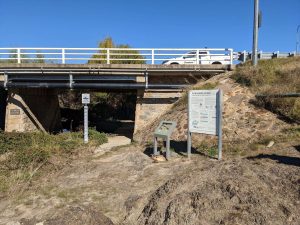My School and the education divide
MORE than nine million parents accessed the Federal Government’s My School website in its first month, but how many understand the controversies and complexities of the data they now have access to? ASHLEY HAMILTON reports.
What is the My School website?
The My School website (www.myschool.edu.au) provides profiles of almost 10,000 Australian schools. The site also provides statistical information as well as NAPLAN (The National Assessment Program – Literacy and Numeracy) (www.naplan.edu.au) results that can be compared with results from statistically similar schools across Australia. Professor Barry McGaw, Chair of the Australian Curriculum, Assessment and Reporting Authority (ACARA) says that the site is “an important opportunity for everyone to learn more about Australian schools and for Australian schools to learn more from each other”. However since its launch on January 28th this year the site has been met with as much criticism as it has praise.
Who is responsible for the site?
The site was proposed by the Council of Australian Governments (COAG) in 2008, as a means of providing the public with information on each school in Australia. COAG agreed that ACARA would undertake this work and design a website that would allow parents and carers to access quality information that would help them make informed decisions about their child’s education. However, ACARA’s role is also to ensure that this information is valid and reliable so that it enables debate in the community around education issues. And there has been no lack of debate in terms of the reliability and purpose of the information on the site, with many teachers and parents voicing concerns over the comparisons which the site draws between schools and their NAPLAN test results.
What information about schools will be published on the website?
The website displays profiles of schools which include information about schools such as numbers of students and staff, attendance rates and results from the national literacy and numeracy tests. There are also plans for the site to be updated to include feedback from parents, students and teachers on satisfaction surveys, school income and the post-school destination of school leavers. ACARA is currently working with education authorities to develop measures to track growth over time. The website will include these measures once they have been agreed upon and once data from several years of NAPLAN assessments are available. Despite initial concerns regarding the publication of background information of students, the site has met personal privacy requirements in that individual students cannot be identified from any of the published results.
How does the site compare schools?
The website uses the results of NAPLAN testing to compare statistically similar schools. However, the comparisons which the site draws between schools are based on the results of one test, conducted nationally over two days every year. Principals and teachers nationwide have voiced concerns about how the website will affect student numbers in schools that perform poorly on national testing. AEU Campaign Coordinator, Mark Robinson says that the data on the website is being used to publicly brand students and schools which don’t perform well on national testing as unsuccessful. “This information is being used to turn our schools into winners and losers. We have schools which are achieving amazing things but if their average test score isn’t high they are effectively being branded as failures.”
What is NAPLAN testing?
NAPLAN testing assesses students using common national tests in Reading, Writing, Language Conventions (Spelling, Grammar and Punctuation) and Numeracy. Students in year three, five, seven and nine in government and non-government schools participate in the testing which is conducted over two days in May each year. Individual student reports are provided to parents and carers and show student results on NAPLAN tests against the national averages and the middle 60 percent of students nationally. Results are also reported nationally through a summary report in September every year and a full national report in December. According to the Australian Council for Educational Research (ACER) NAPLAN represents the ‘world’s best practice in the ability to measure student progress’.
So how reliable is the information that the site provides?
Whilst it is true that parents and communities want more information about schools, including performance data, the site has so far been less than perfect at delivering what Gillard said would be “transparency and accountability to the Australian school system”. Questions over the reliability of the results displayed on the website arose after the site placed Scotch College, one of Melbourne’s most privileged schools, in the same category as Epping North Public School. AEU Federal President Angelo Gavrielatos says the fact that elite private schools have been classed as comparable to regional public schools is a sign the site is deeply flawed. “It confirms what we have been saying about the website, which is that it is incomplete, inaccurate and invalid. It is peculiar and mind-boggling to say that schools in the ACT and South Australia are comparable with one of the wealthiest schools in the country. If this transparency, the heaven help us”
Ultimately, all the data about the performance of students on national tests are only one aspect of the information that should be taken into consideration when looking at the school profiles. You should take into account the school’s curriculum and extra-curricular activities, facilities and programs. The NAPLAN results and My School site really are only an additional resource, and cannot beat visiting a school, talking to the principal and teachers, having a tour of the school, and making a decision based on what a school can offer that meets the needs of an individual child.
How can you find out about schools in your local area?
You can search for a school by its location, sector or name. There are three main sectors; primary schools, secondary schools and combined schools, as well as special purpose schools. You can also view a list of up to 20 schools located nearest to the school you select. Most profiles showcase the school’s mission statement and achievements and have links to the school’s website so you can find out more information about the school community.
By ASHLEY HAMILTON
(Break out paragraph)
My School Profile Pages
The My School website provides profile information on each school’s:
• Student population – the socio-economic status (SES) of the school student body, the proportion of students with an Indigenous background, and student attendance rates
•
• Capacity or capability – the type of school, the year range, student and staff numbers, and the school’s location
•
• Educational achievements – the results of national literacy and numeracy testing, senior secondary outcomes and, for states with relevant data, post-school destinations.
•




Be the first to comment!